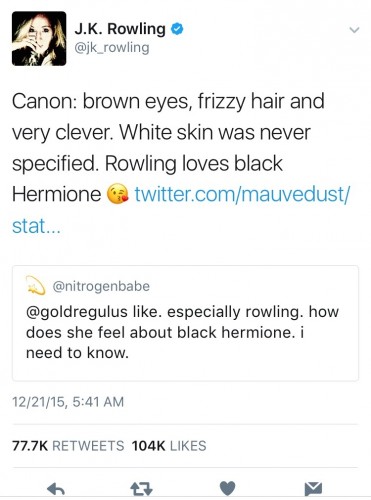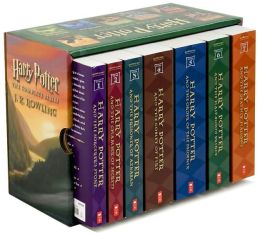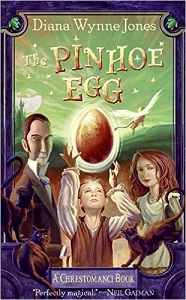
Welcome to the Horn Book's Family Reading blog, a place devoted to offering children's book recommendations and advice about the whats and whens and whos and hows of sharing books in the home. Find us on Twitter @HornBook and on Facebook at Facebook.com/TheHornBook
Reading Race and Power in Fantasy
When my daughter was three or four, we would play a computer game together where she would have to choose an avatar to represent herself.
 When she was very little, we looked at picture books, pondering the different lives of the Inuit family in Mama, Do You Love Me? and African American city boy Peter in The Snowy Day. But by the time she was in kindergarten, race took on particular meaning: she knew she was white and some of the other kids in her class weren’t, and those children were sometimes treated differently for no discernible reason.
When she was very little, we looked at picture books, pondering the different lives of the Inuit family in Mama, Do You Love Me? and African American city boy Peter in The Snowy Day. But by the time she was in kindergarten, race took on particular meaning: she knew she was white and some of the other kids in her class weren’t, and those children were sometimes treated differently for no discernible reason.Ask any anthropologist about race, and she’ll talk for an hour about how there is no biological basis for dividing humans up into racial categories. We tend to assume genetic similarity based on surface categories like skin tone or eye shape, but in fact our racial categories don’t correspond to any real underlying biological uniformity. Racial groups like “black” or “Asian” exhibit far more diversity than similarity within the group. Inherited traits like hair type or melanin content or lactose intolerance don’t map out over one another to form any cohesive genetic grouping. Further, racial categories vary from culture to culture (just look at the multiple ways there are to express gradations of whiteness or blackness in the Dominican Republic) and change over time (Italian, Irish, and Jewish folks in America were not considered white in America in 1900 but are, by most people, today).
Still, despite the cultural, rather than biological, nature of racial categories, they have real consequences for people because we take action based on our perceptions — whether we identify with someone, or see them as different than us, often depends on how we group them racially.
Talking to kids about race can be intimidating for parents, and particularly intimidating for white parents in the U.S., who tend to delay the conversation almost ten years after black and Latino families broach the subject. Although we spend a lot of time in our house talking explicitly about racial diversity and what it means, the books I have found most powerful in addressing the underlying politics of race and racism aren’t actually about race at all.
My daughter and I began the Harry Potter series when she was five, and have read through the first three books so far. Although author J.K. Rowling herself has affirmed that the series was written in response to anti-immigrant sentiment in the U.K., the books never directly address questions of race. The witches and wizards themselves represent a variety of races, ethnicities, and nationalities, but race is treated as an afterthought. Indeed, in a recent play based on the sequel, The Cursed Child, Hermione was played by black actress Noma Dumezweni, a decision Rowling herself applauded, tweeting:
 "Canon: brown eyes, frizzy hair and very clever. White skin was never specified. Rowling loves black Hermione"
"Canon: brown eyes, frizzy hair and very clever. White skin was never specified. Rowling loves black Hermione" The Potterworld social problems lie along different lines — the amount of wizard heritage one has. Rowling opens the door for conversations about the socially constructed, fictional nature of race through the actual fiction of muggles and mudbloods. Sneers by “pure blood” wizards against non-magical folk or mixed-magic families are partnered with discrimination against non-human, magical creatures like goblins, centaurs, house-elves, and giants, who are not accorded the same rights as humans.
The Potterworld social problems lie along different lines — the amount of wizard heritage one has. Rowling opens the door for conversations about the socially constructed, fictional nature of race through the actual fiction of muggles and mudbloods. Sneers by “pure blood” wizards against non-magical folk or mixed-magic families are partnered with discrimination against non-human, magical creatures like goblins, centaurs, house-elves, and giants, who are not accorded the same rights as humans.The arch-villain Voldemort is palpable in his discrimination. It’s not fair, says my daughter, that Voldemort would hate someone just because her parents are muggles. However, Rowling’s writing of sympathetic characters, like Seamus Finnegan and Ron Weasley, also makes room for discussion of covert prejudices. Ron’s persistent ignoring of discrimination and his unquestioning acceptance of his own privilege are important talking points, too:
…it demonstrates that racism isn’t only present in clearly malicious and evil people, in the Malfoys and Blacks — it’s also there in warm, kind, funny people who just happened to learn some pretty toxic things growing up in a pretty toxic society. And they can unlearn them too, with some time and effort.
The story line, which becomes a little intense in the fourth book, opens all sorts of possibilities to discuss inclusion and exclusion. Neither wizards nor muggles are painted as uniformly good or evil. Rather, the heroes are those who refuse to succumb to fear of the other, refuse to artificially draw lines of differing worth between folks, and refuse to rest comfortably in their privilege while others are targeted.
 As my kids get older, the later books in the Harry Potter series will allow us to talk through real issues of racial profiling, genocide, and institutionalized racism. Additionally, there are so many other excellent fantasy books that are and aren’t about race and racism that I also look forward to discussing. Diana Wynne Jones’s The Pinhoe Egg is a beautifully written story in the Chrestomanci series that examines tribalism and how entrenchment in belief can create unwarranted suspicion and hostility toward outsiders. The Lord of the Rings trilogy provides much to chew on when thinking through cultural diversity and the threat of imperialism. And, of course, nothing unpacks neocolonialism, economic globalization, and Wallerstein’s division of the world into powerful Cores and exploited Peripheries like The Hunger Games.
As my kids get older, the later books in the Harry Potter series will allow us to talk through real issues of racial profiling, genocide, and institutionalized racism. Additionally, there are so many other excellent fantasy books that are and aren’t about race and racism that I also look forward to discussing. Diana Wynne Jones’s The Pinhoe Egg is a beautifully written story in the Chrestomanci series that examines tribalism and how entrenchment in belief can create unwarranted suspicion and hostility toward outsiders. The Lord of the Rings trilogy provides much to chew on when thinking through cultural diversity and the threat of imperialism. And, of course, nothing unpacks neocolonialism, economic globalization, and Wallerstein’s division of the world into powerful Cores and exploited Peripheries like The Hunger Games.In addition to the many metaphors of fantasy, sprinkled throughout the shelves of children’s literature are numerous excellent books for kids and parents that offer examples of diversity and how to talk to children about race. Regardless of which book you choose, the important part is starting the conversation.
RELATED
RECOMMENDED
ALREADY A SUBSCRIBER? LOG IN
We are currently offering this content for free. Sign up now to activate your personal profile, where you can save articles for future viewing.







Add Comment :-
Be the first reader to comment.
Comment Policy:
Comment should not be empty !!!